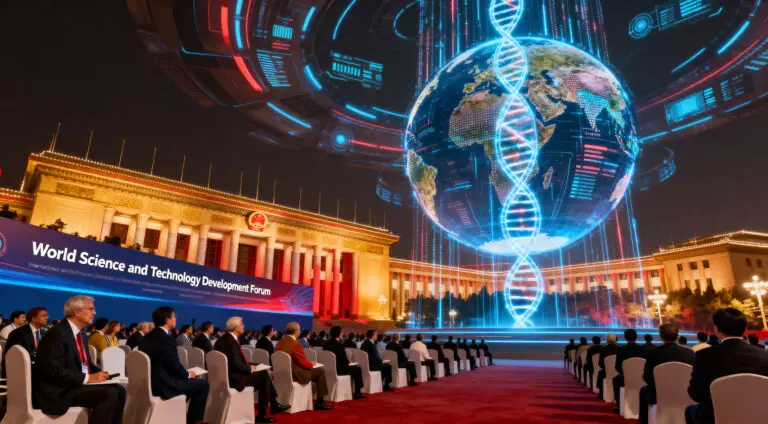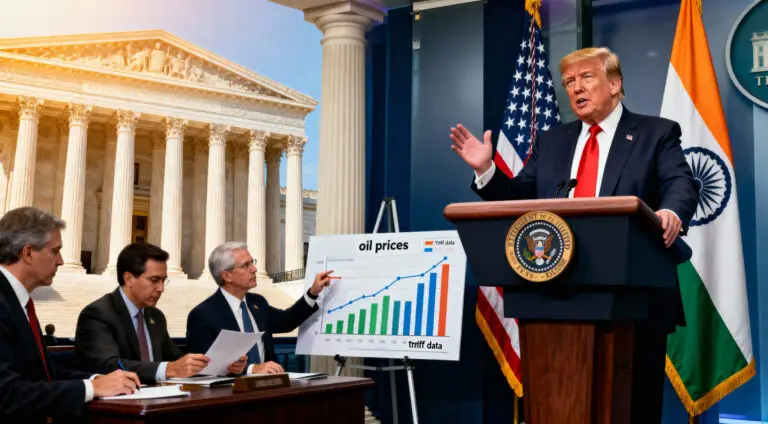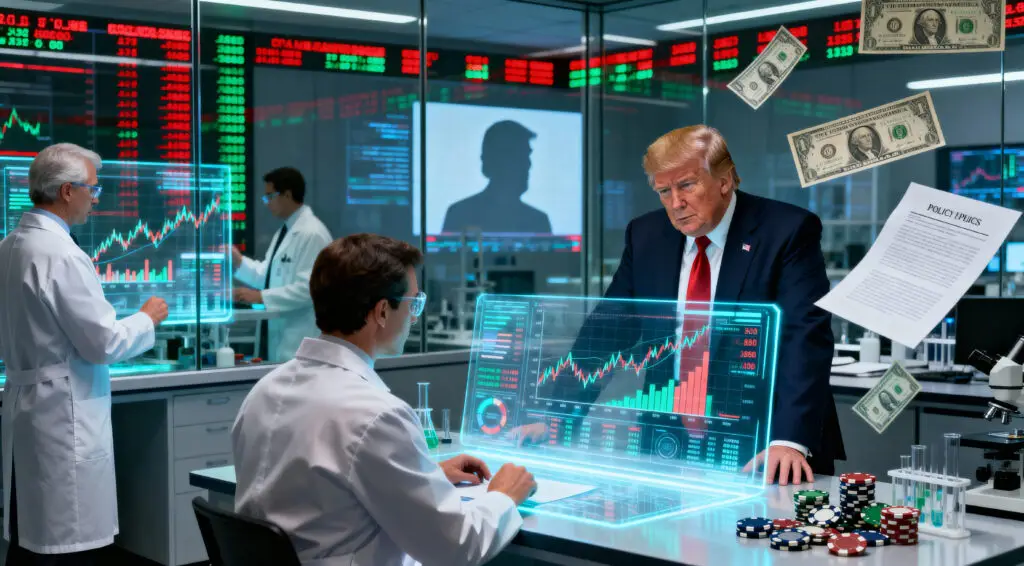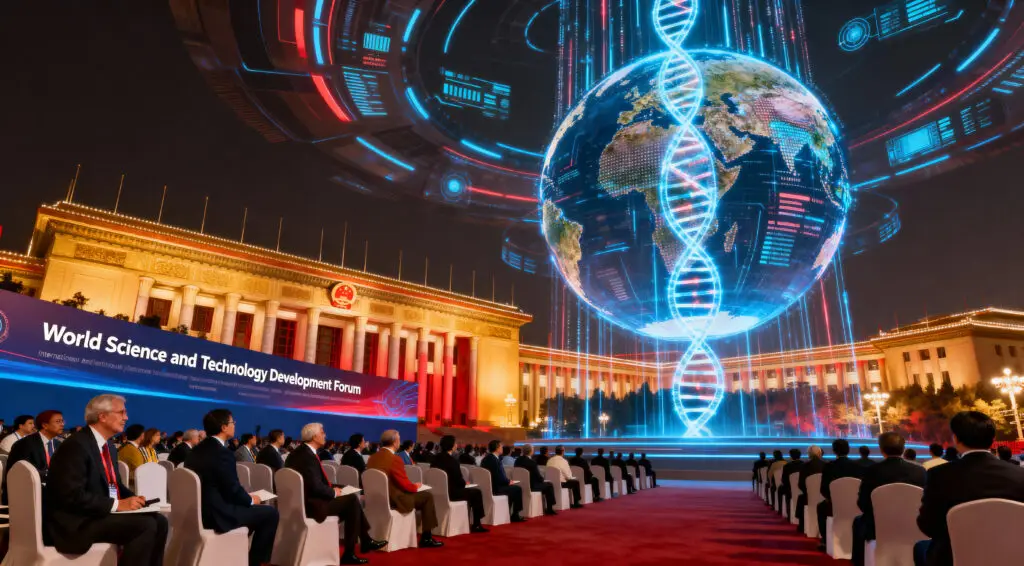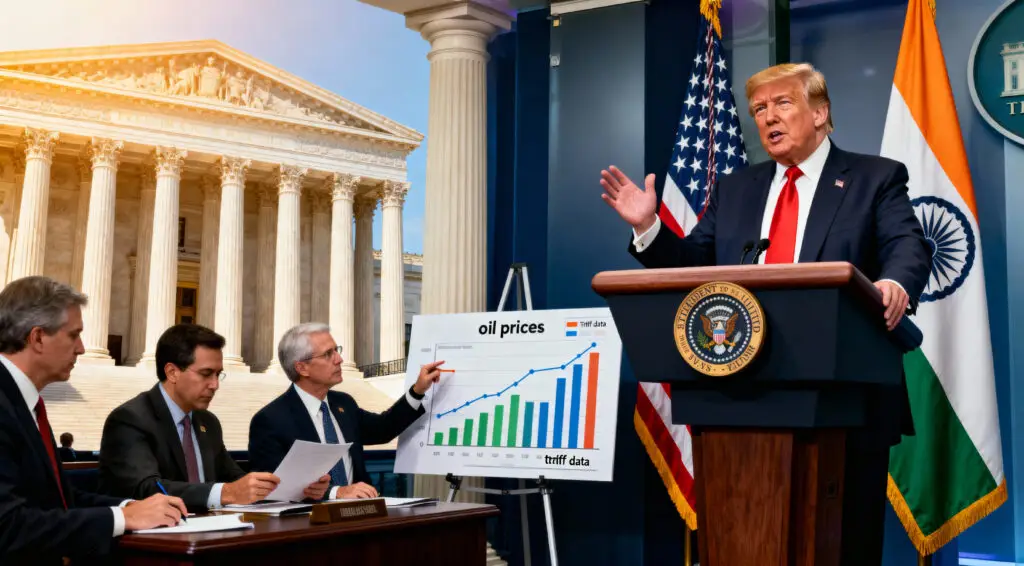America Enters Bold Economic Experiment Under Trump’s Leadership
WASHINGTON, D.C. — November 12, 2025 — The United States is embarking on one of the most ambitious economic experiments in a century, as President Donald Trump’s administration implements sweeping fiscal, trade, and monetary shifts aimed at reshaping growth, inflation, and government control.
Analysts from The Economist say the scope and pace of these overlapping initiatives are unprecedented, setting the stage for 2026 to become a defining year for America’s economic direction.
Trump’s Economic Reforms Rewrite Traditional Policy Playbook
Trump’s administration has enacted policies that simultaneously cut taxes, expanded tariffs, and pressured the Federal Reserve to pursue looser monetary policies despite persistent inflationary risks. Economists say this unconventional combination could either supercharge growth or destabilize markets.
“Scientists like to run experiments carefully, isolating one variable at a time,” said Archie Hall, U.S. economics editor at The Economist. “Trump operates differently—he’s testing everything at once.”
Fiscal Expansion Meets Trade Protectionism
At the heart of this economic experiment lies a massive fiscal expansion paired with aggressive trade measures. The government is pouring billions into infrastructure, defense, and industrial subsidies, while maintaining high tariffs on key imports from China and Europe.
Supporters argue that this approach boosts domestic manufacturing and employment, while critics warn it risks runaway inflation and global retaliation. Hall noted that early indicators suggest short-term growth but questioned the sustainability of such heavy-handed intervention.
Recommended Article: Trump Hails GOP Victory as US Shutdown Nears Official End
Supply Chain Reordering and Industrial Reshoring
The administration’s “America First Supply Chain” initiative continues to repatriate manufacturing across strategic industries like semiconductors, defense technology, and pharmaceuticals. However, these efforts have strained global trade alliances, as countries respond with new barriers and countermeasures.
Economists at major investment banks say the U.S. now faces a “controlled stress test” of globalization itself. The results will reveal whether reshoring and self-reliance can offset the efficiency losses from fragmented supply chains.
Inflation Pressures and the Federal Reserve’s Balancing Act
The Federal Reserve faces an increasingly difficult task. Despite economic expansion, core inflation remains above 4%, forcing the Fed to balance Trump’s pro-growth agenda with its mandate for price stability.
“The administration’s fiscal push adds fuel to an already overheated economy,” said Hall. “The question is whether the Fed can cool inflation without triggering a recession.”
Many economists expect volatility in bond and currency markets through 2026 as the U.S. tests the limits of monetary independence amid fiscal dominance.
Global Ripple Effects and Investor Reactions
Trump’s economic experiments are also rippling through global markets, influencing trade policies, capital flows, and currency valuations. The dollar has strengthened amid foreign investment inflows, even as some partners question America’s long-term reliability as a trade ally.
European and Asian policymakers have responded by diversifying reserve assets and strengthening regional cooperation to reduce dependence on U.S. monetary cycles.
Political Calculations and 2026 Outlook
As Trump prepares for a potential re-election bid, his administration’s economic agenda is being closely watched as both a political gamble and a financial stress test.
Supporters call it “economic reindustrialization”; critics describe it as “fiscal brinkmanship.” Yet both sides agree that 2026 will deliver measurable results on employment, inflation, and productivity growth.
America’s Economy at a Crossroads
The coming year will determine whether Trump’s economic experiment proves a model of controlled disruption or a cautionary tale of overreach. The results will not only shape domestic prosperity but redefine how the world perceives U.S. economic leadership.
“America’s experiment is underway,” Hall concluded. “By next year, the data will show whether disruption breeds renewal — or instability.”


